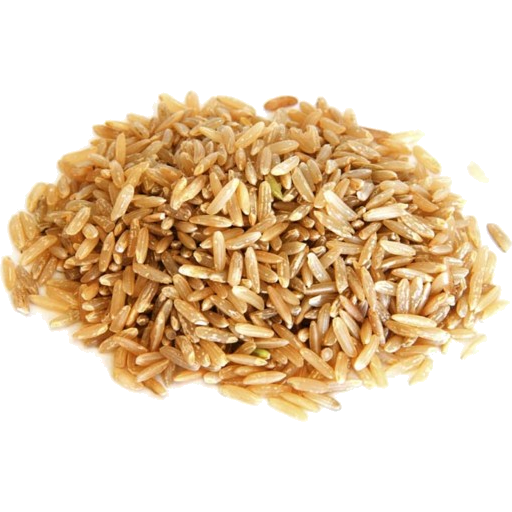Natural Flavour - Caramel

Description
Besides being tasty and nutritious, RAINFED RICE is probably the most sustainable rice grown in Australia. Here’s why: RAINFED No irrigation water needed to grow this rice which means Australia’s critical water resources are not drawn on Southern Australian rice crops require approx. 1550 litres of pumped water for just 1kg of rice. Irrigated rice-paddy rice fields produce methane, enough methane emissions to be a major source of atmospheric concern methane is twenty times more potent a greenhouse gas than CO2 BIO-DYNAMIC DEMETER CERTIFIED The “Demeter” label is used to certify high quality nutritional food produced by organic and bio-dynamic agriculture. Bio-dynamic Demeter farming has developed to be one of the most sustainable and successful forms of organic agriculture practiced across the world. LOW FOOD MILES Grown, milled and distributed by the family-owned Slater Farm in Northern Rivers, NSW. Brown rice isn't milled as much as white, so it retains the bran and germ. That makes brown rice more fiber-rich, nutritious, and chewy. Unfortunately, it doesn't perform as well as white rice in many recipes. Long grains of brown rice aren't as fluffy and tender, and short grains aren't as sticky. Brown rice also takes about twice as long to cook and has a much shorter shelf life (because of the oil in the germ). Keep it in a cool, dark place for not more than three months. Refrigeration can extend shelf life.About Hopper
What are Hopper Natural Food Colours? Hopper natural colours are actually ‘colouring foodstuffs’ concentrates made from fruits and vegetables such as elderberries, pumpkins, carrots and red cabbage. Because they are a colours extracted nature they are classified as food ingredients not ‘additives’ which are represented by a number or and E-number. Hopper natural colours are derived using a water extraction process, solvents or chemicals are not used in the manufacturing process, and they do not contain any artificial functional additives. Hopper Natural Colours are free from: Synthetic Antioxidants E-numbers Artificial preservatives Emulsifiers Stabilisers Solvent residues Artificial ingredients What colours are available? There are lots of gorgeous colours to choose from so let your creativity run wild. If anyone has any creations they would like to share with us please send us a photo and we will publish them in our gallery. Blue Spirulina, Invert Sugar, Sucrose, Citric Acid Kiwi Green Safflower, Spirulina, Invert Sugar, Sucrose, Citric Acid Cherry Red Carrot, Blackcurrant, Invert Sugar, Citric Acid Lemon Yellow Safflower, Lemon, Invert Sugar, Citric acid Pink Purple Sweet Potato, Radish, Cherry B, Apple, Citric Acid Cloudy Orange Carrot, Pumpkin, Invert Sugar, Citric Acid Purple Grape Purple Carrot, Hibiscus, Invert Sugar, Citric Acid. How much do I use? The colours are very concentrated and a typical dosage level is 1 or 2% of the finished product. Add a drop at a time until the desired colours is achieved. Tips for using the colours Hopper Natural Colours are pH sensitive and work best in slightly acidic environments. If you are using alkaline ingredients such as eggs and milk you may want to add a small amount of acid such as lemon juice, citric or tartaric acid (all natural ingredients). The most affected colours are pink, purple and particularly the red – it goes pinky purple. We recommend testing the colours in a planned mixture to ensure desired colour can be reached prior to any important event. Please also note, that colours will fade during baking and the colour may alter due to the heat and pH of the product. We do not recommend using them in baking products without experimenting first. We do recommend storing the product in the fridge or freezer to ensure stability in extreme temperatures and to maintain colour intensity. The best before date is only a guide and we recommend using your judgement as to whether you wish to continue using the product after its best before date. The product can be frozen and thawed many times over. We recommend using your judgement in whether to use after the best before date. Defrost to room temperature prior to use. Can be frozen and defrosted repeatedly as required. Product remains a liquid even when stored in freezer.

